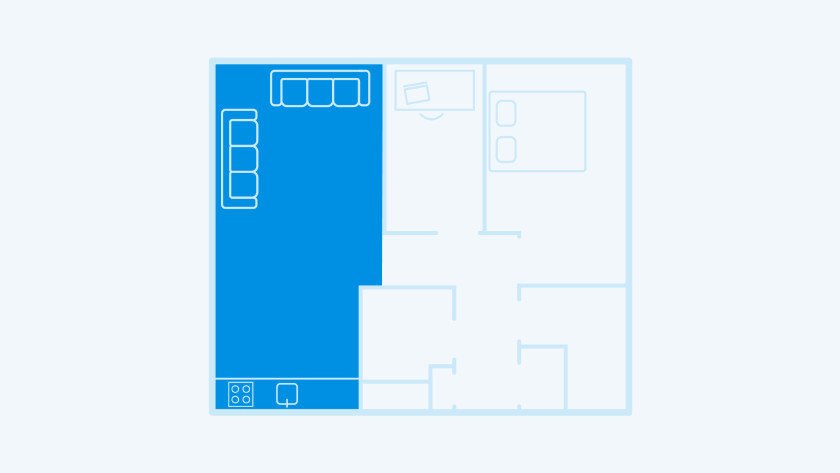FAQs
Calculate the power for your room
How do you calculate the power of a radiator? ›
Radiator output calculator
Start by working out the volume of each room by multiplying the length by the width and height of the space. The result is the size of the room in cubic metres. Then decide on the temperature you require for each room and the required wattage per cubic metre.
How do you calculate radiator needs? ›
A room's BTU requirement is based upon the cubic volume of the space – the height, length and the width of the room multiplied by four (done for you by our calculator) – and what is above, below and besides the room.
How to calculate radiator cooling capacity? ›
The cooling capacity of an automotive radiator is determined by its ability to dissipate heat from the engine. This can be calculated by multiplying the mass flow rate of coolant by the specific heat capacity of the coolant and the temperature difference between the coolant and the air.
What wattage radiator do I need? ›
To work out your room's floor area you need to measure and multiply the floor length by its width. For example, a room which is 4 meters long and 3.5 meters wide has an area of 14 square meters. To heat this room effectively you would need the correct size radiator model with a minimum wattage of 1430 watts.
What is the formula for radiator? ›
A radiator's heat delivery is expressed in watt. The formula below is used to determine the required level of heat output in any given room: square metres x the number of watts per square metre.
How do you calculate cooling wattage? ›
BTUs, SEER Rating, and Watts
If the label on the AC system shows the SEER rating and BTUs, calculating watts is a bit more straightforward. Divide the number of BTUs by the SEER rating, and the result is the number of watts.
How much radiator do I need? ›
For lounges, living rooms, and dining rooms, multiply the cubic volume by five. For bedrooms, multiply by four. For common areas and kitchens, multiply by three. This gives you the needed radiator output in BTUs.
How much radiator coolant do I need? ›
How much coolant is needed in a car? The average car's cooling system holds about 5 litres of coolant – and most vehicles require between 3 and 7 litres of coolant at a time.
How do you calculate heating and cooling requirements? ›
Measure the length and width of each room the AC system will serve. Calculate the square footage of each room by multiplying the width by the height. Add up the square footage of each room to get the total square footage served by the HVAC system. Multiply that figure by 20 to get the base BTU load requirement.
Use the formula Q = M X C X ΔT where:
- Q = heat load in British Thermal Units per Hour (BTUH)
- M = flow in Gallons per Hour (GPM)
- C = specific heat of the fluid.
- ΔT = temperature difference in degrees Fahrenheit.
- Q = 500 BTU per gallon per hour X 40 GPM x 12 ΔT = 240,000 BTU per hour.
Plot time on the x axis and temperature on the y axis and calculate the slope to find the rate of cooling. Alternatively, students may find the rate by dividing the overall change in temperature by time. You can adjust the procedure to match your objectives.
How do you calculate cooling consumption? ›
Let us now calculate the AC power consumption using an example. For example, there is a branded 1.5 kW AC that runs 8 hours per day. As a result, the total power consumption of that air conditioner will be 1.5 * 8 * 30 =360 units per month.
How do you calculate radiator power? ›
Calculate the power for your room
First, calculate how many cubic meters the room is. You can do this with the following sum: length x width x height. Multiply this result by the power that corresponds to the insulation of your room.
How many kW does a radiator need? ›
As a rule of thumb guide, account for: 1.5kW per radiator in your home + 3kW for your water cylinder. Or, for ease, use our online tool and you'll also see a range of fixed price quotes, win-win.
How do I know what size radiator I need? ›
In order to calculate the BTU output that is required, you will need to measure the length, width, and height of your room. You can then use this information in conjunction with our radiator BTU calculator linked above, along with room type, type of window glazing, and how sheltered or exposed it is.
What is the power output on a radiator? ›
Common Radiator Power Outputs
Measure the width and height of your radiator, then use the appropriate table below to determine it's power output in Watts. 1 Kilo Watt (kW) = 1000 Watts. 1 Watt is approx. 3.4 BTU/hour, or. 1000 BTU/hour = 293 Watts.
How many kW per radiator? ›
As a rule of thumb guide, account for: 1.5kW per radiator in your home + 3kW for your water cylinder. Or, for ease, use our online tool and you'll also see a range of fixed price quotes, win-win.
How much power does a radiator draw? ›
You'll find the radiator's power rating in watts on its label. Estimating Energy Consumption: Multiply the radiator's wattage by the number of hours you plan to use it daily. For example, a 1500W radiator used for 5 hours a day consumes 7.5 kWh.
How much electricity does a 1500 watt radiator use? ›
1,500 watts (space heater rating) x 6 (average daily hours) = 9,000 watts or 9 kilowatts of electricity daily. 9 kilowatts x 9 cents per kilowatt = 81 cents per day.



